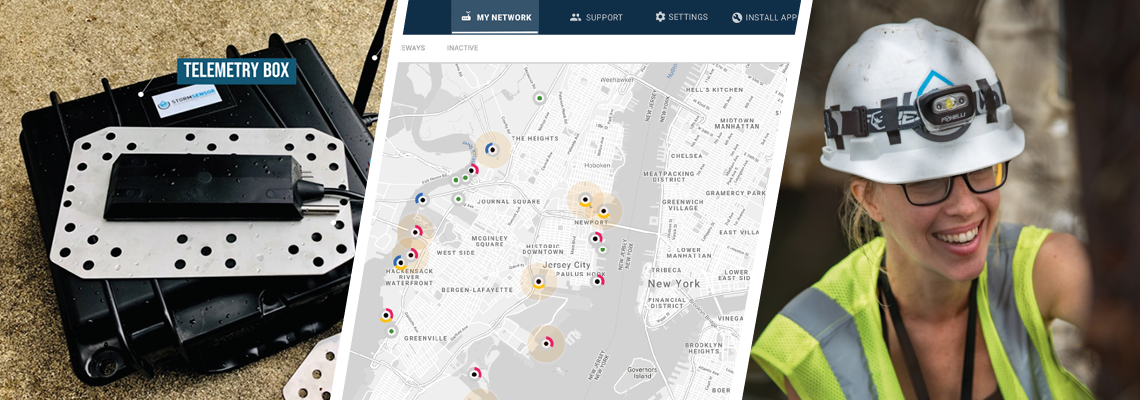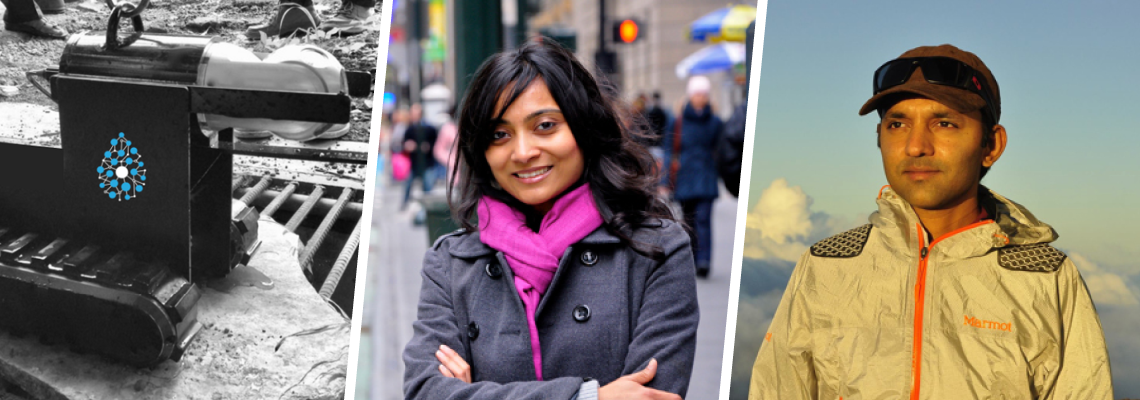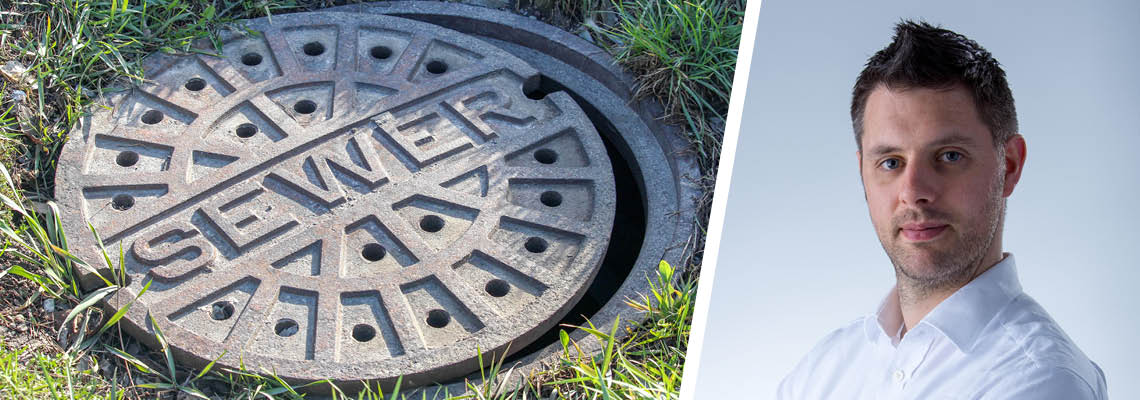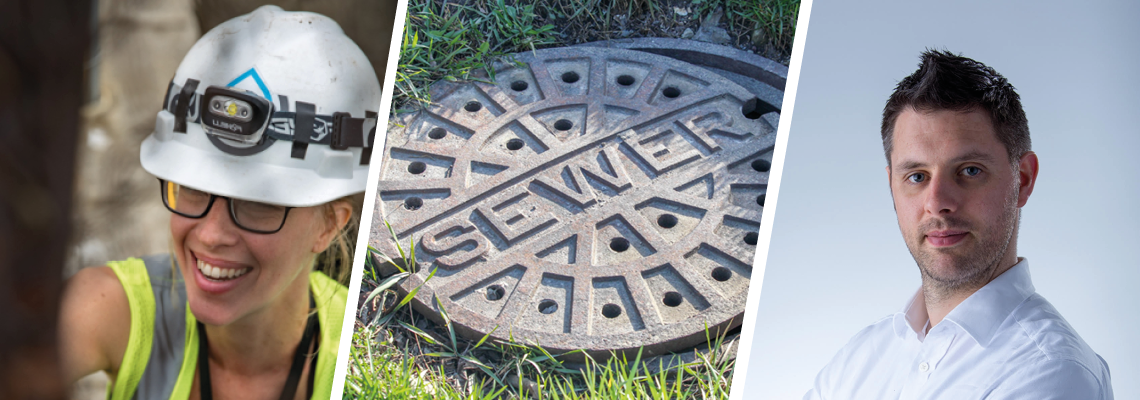5 start-ups making sewers smarter
Five start-ups are on a mission to make sewer infrastructure smarter, from robots to AI, to creating the "google-maps" of wastewater pipes. Tom Freyberg checks them out.
Sewers - your time is now!
The drinking water market has seen an influx of digital solutions offering the ability to help spot leaks, provide data on water quality and improve utility operations.
However, if drinking water is the cleaner, sexier attraction for start-ups offering the latest software and hardware innovations, then sewers could be called the unloved sibling, carrying on regardless yet in a critical role.
Often in desperate need of expansion, especially to reduce storm overflow events as reported in the UK over the summer, sewers simply haven’t had the same amount of start-up attention.
Yet, times are a changing. Sewers – your time is now!
As critical water infrastructure, sewers are attracting entrepreneurs to help gather new data on these former deep, dark and often out of sight assets.
From sewer crawling robots to artificial intelligence (AI) offering the ability to speed up CCTV comparisons, solutions are being offered by start-ups around the world. Aquatech Online looked into five start-ups making headway in this space.

VAPAR: Speeding up sewer inspections with AI
Standing for Video Analytics Processing And Reporting, VAPAR was founded in 2018 by Amanda Siqueira and Michelle Aguilar. The system works by using an algorithm to auto-code CCTV videos using AI.
After working in the inspection team as an intern for utility Sydney Water, Siqueira saw an opportunity to digitalise the CCTV inspection of sewers. What she refers to as a “very manual, slow and repetitive task” for utilities.
“The co-founders proposed a solution using an algorithm to auto-code videos using artificial intelligence.”
Traditional methods involve CCTV cameras on devices known as “crawlers” introduced to sewer and stormwater pipes to check for damage, with footage often reviewed multiple times manually. Instead, the co-founders proposed a solution using an algorithm to auto-code CCTV videos using AI.
The co-founders have raised AUD 1.2 million (USD $883,000), and conducted a partnership trial with Veolia Network Services in Victoria, Australia.
As well as working in New Zealand, VAPAR secured a place in the second cohort of the United Utilities Innovation Lab programme and is also working with UK utility, Anglian Water.
Siqueira told Aquatech Online that the company is starting its Series A fundraise in July.

StormSensor: Creating the GoogleMaps of sewers
After founding her own consultancy, Erin Rothman saw an opportunity to create StormSensor and deliver her mantra of creating the “GoogleMaps of sewers”.
Recently attracting investment from Burnt Island Ventures, Rothman told Aquatech Online that the company has deployed networks in Deerfield, Stokie, River Forest, North Miami in Illinois, North Miami in Florida, Norfolk, Virginia and Anaheim, California.
The seed for StormSensor began in 2010. An MS graduate in Natural Resources/Wetland Ecology from the Ohio State University, Rothman and the team were hired to work on the Lower Duwamish Waterway in Seattle.
"All of the property owners and facility operators along the river had to prove that their stormwater runoff was compliant with state standards," she recalled in a previous interview. "And if they couldn't, then they were considered a source of the pollution, so would have to pay for part of a multi-billion dollar clean-up.”
“City officials needed to understand how much water was flowing through their systems.”
StormSensor remained an idea for four years until 2014. After founding her own consulting company, SLR Consulting, she switched focus to industrial and construction compliance. She initially thought the company would monitor temperature, flow, pH, turbidity and then summarise the data into reports.
Instead, city officials told her they needed to understand how much water was flowing through their systems. Rothman saw an opportunity. Deciding to take away the chemical parameter measurement meant the sensors wouldn’t need to be maintained, in the process reducing battery life.
“That's where the notion of the network came up, and then looking at capacity issues and flow is where the "Google with traffic maps for sewers" idea started...It's like metering the last unmetered utility,” Rothman said.

Fluid Robotics and its sewer scanning robotics
Indian/US-start up Fluid Robotics has developed a small army of robots to scan sewer infrastructure for defects but quickly pivoted its machines to collect samples for Covid-19.
The company recently received $100,000 funding from the Central Government in India (Ministry of Electronics and IT, Ministry of Science and Technology) to expand its Covid-19 surveillance program through wastewater monitoring.
“As robotics engineers in Silicon Valley, they developed a wastewater surveillance robot to map underground networks.”
As robotics hardware and software engineers working in Silicon Valley, Asim Bhalerao and Nidhi developed a prototype AI-based wastewater surveillance robot with the ambition to map underground networks, inspect water quality and flow and capture pipe health.
After taking time off work to travel with the prototype robot from the US to India, they convinced the water supply department in Mumbai to allow them to do pilots.
The company partnered with UK consultancy, Pell Frischmann, to bid on a city tender and identified about 18 stormwater drains that were basically discharging raw sewage into a lake.
The team won the Imagine H2O’s 2020 Urban Water Challenge Audience Choice Award for its AI-based wastewater surveillance robots helping to map India’s sewers.
Asim Bhalerao told Aquatech Online that since a previous interview, Fluid Robotics has entered into key partnerships to “scale up its disease detection program”, with the All India Institute of Medical Sciences (AIIMS), India and the National Chemical Laboratory, India.
The wastewater surveillance programme is being expanded to North and South America, and also South East Asia. Discussions are underway with investors to fundraise the international scale-up.

Nuron: Real-time visibility of sewer operational events
British start-up nuron is commercialising and scaling up a fibre technology that acts like a human nervous system but for sewers.
The company secured £2 million in investment, loans and grants to deliver a pilot project in Northumbrian Water’s sewer network.
Since then, the company has gone on to raise another £1 million to implement the learnings from the pilot and scale up the technology for commercial deployment.
As part of the pilot project the technology was deployed into a live operational sewer (grades one - five) and monitored continuously and in real time. It is the first time that flow, depth, temperature and other operational parameters have been monitored on a linear basis inside sewer pipes.
“Since the pilot, the company has been developing and refining its algorithms in its full-scale test bed at the University of Sheffield.”
Nuron told Aquatech Online: “The system provided real-time visibility of operational events such as blockages, infiltration and inflow events; vital insight to enable a shift to proactive operations. It also provided real-time data of flow and depth to enable detailed analysis of sewer performance, potentially transformational for design, maintenance and upgrade planning.”
Since the pilot, the company said it has been developing and refining its algorithms in its full-scale test bed at the University of Sheffield. The company is now focused eyeing up the smart cities markets in North America and is expecting to close its first full scale development by the end of 2022.

StormHarvester: Forging smarter sewers and networks
Belfast-based company StormHarvester has developed a solution using machine learning, hyperlocal rainfall prediction and forecasting tools to monitor and control water and wastewater networks.
The company was founded in 2012 and is led by co-founder Brian Maloney, an experienced drainage engineer, whose passion is for machine learning and AI in the water space.
In 2019, StormHarvester was awarded £2 million from the Green Angel Syndicate and has been further backed by venture capitalist investment.
“In three months, StormHarvester’s Intelligent Sewer Suite detected over 60 early blockage formations in real time.”
The firm has developed a solution called Intelligent Sewer Suite (ISS), which it deployed in the Summer of 2020 to provide real-time level predictions and alerts on early blockage formations for the sewer network of the city of Bath.
Current StormHarvester clients three major UK water utilities: Wessex, Northumbrian, NI Water - all of which are working with the company on AI and predictive engagements in wastewater.
Internationally, the company has partnered with WAVIN, an industry leading Dutch drainage company, on smart water network management in storm tanks.
Speaking to Aquatech Online, the company said: “In three months, StormHarvester’s Intelligent Sewer Suite detected over 60 early blockage formations in real time, at least two of which Wessex Water told us were likely to have caused significant pollution incidents (CAT 3 or worse) if it was not for these alerts. Over 60 telemetry and sensor faults were also detected in real time.”
Related content
- Fatberg detecting 5G sewer ‘nervous system’ goes down under
- Erin Rothman creating the Google Maps of sewers
- Aussie sewer duo see a pipeline of growth to automate CCTV inspection
- Meet Asim, Nidhi and their sewer scanning robots
Share your water technology stories with us
Do you have an innovation, research results or an other interesting topic you would like to share with the international water technology industry? The Aquatech website and social media channels are a great platform to showcase your stories!
Please contact our Sr Brand Marketing Manager Annelie Koomen.
Are you an Aquatech exhibitor?
Make sure you add your latest press releases to your Company Profile in the Exhibitor Portal for free exposure.
We promise never to send you spam and you can unsubscribe at any time!
